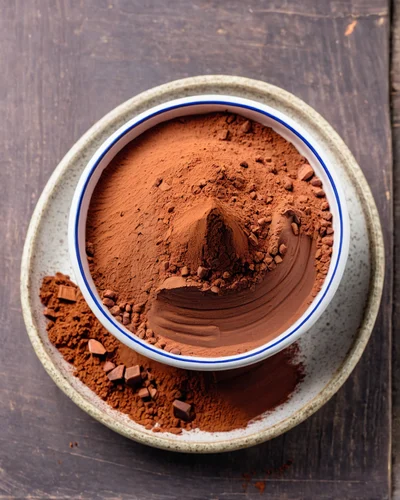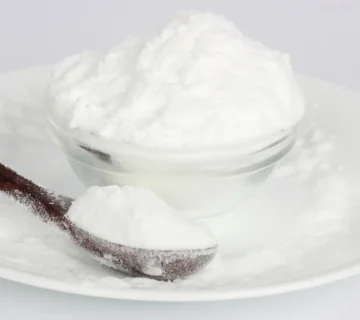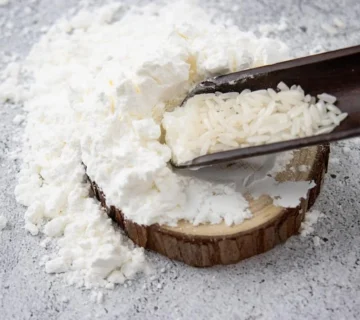In Algeria’s thriving industrial confectionery sector, cocoa powder is far more than a simple flavoring ingredient—it is a core production asset that directly shapes both the taste and operational efficiency of your factory. From chocolate-filled pastries and layered cakes to premium confectionery coatings and chocolate-based fillings, the quality, consistency, and processing properties of cocoa powder determine product color, texture, flavor uniformity, and ultimately, customer satisfaction.
For production managers and plant supervisors, sourcing the right cocoa powder is not merely a procurement task—it is a strategic decision that affects every stage of production. Variations in particle size, fat content, or alkalization can disrupt mixing, tempering, and coating processes, leading to downtime, increased waste, or inconsistent final products. Reliable partners like MT Royal, which supply a comprehensive range of brands at competitive prices, provide the consistency and technical support factories need to maintain smooth operations.
Additionally, integrating premium options such as Latamarko, known for European-grade quality and precise production standards, allows manufacturers to achieve enhanced color intensity, richer flavor profiles, and superior processing performance. With the right cocoa powder strategy, Algerian confectionery manufacturers can confidently produce high-quality, visually appealing, and flavorful products while optimizing efficiency, minimizing waste, and maintaining a competitive edge in both local and export markets.
Understanding Cocoa Powder for Industrial Confectionery
What Is Cocoa Powder?
Cocoa powder is the finely ground product derived from roasted cocoa beans. It serves as the foundation for chocolates, fillings, coatings, and many confectionery applications. Industrial-grade cocoa powder differs from retail versions in several ways:
- Particle Size: Finer, consistent particle size ensures smoother processing and better incorporation into doughs, creams, and ganaches.
- Fat Content: Industrial cocoa powders often offer adjustable fat content, critical for tempering and coating applications.
- Color Consistency: Dark cocoa powders contribute to the signature deep color of chocolate-based products, a non-negotiable attribute for consumer perception.
In our experience supplying confectionery plants across Algeria, factories relying on inconsistent cocoa sources often face batch rejections, flavor deviations, and processing delays.
Types of Cocoa Powder Relevant to Confectionery
- Natural Cocoa Powder: Light in color, tangy in flavor; ideal for baked goods and certain chocolates.
- Alkalized (Dutched) Cocoa Powder: Darker, smoother, less acidic; commonly used in coatings, ganaches, and premium chocolate products.
- Dark Cocoa Powder: High-intensity flavor and deep coloration; perfect for gourmet and high-end confectionery products.
Tip: Align the type of cocoa powder with your end product to maintain flavor integrity and production efficiency.
The Industrial Advantages of High-Quality Cocoa Powder
Consistency in Production
Industrial-scale confectionery relies on batch-to-batch uniformity. Variations in cocoa powder quality can affect:
- Dough consistency in chocolate cookies or pastries
- Texture and gloss of coatings
- Flavor profiles in chocolate fillings
High-quality suppliers, such as MT Royal, ensure each bulk shipment meets rigorous specifications, reducing variability and production errors.
Optimized Processing
Cocoa powder affects machinery performance as well. Finer, well-processed powders reduce clumping, minimize wear on mixers and tempering machines, and prevent downtime caused by inconsistent flow or blockages.
Cost Efficiency
While premium cocoa powders may come at a slightly higher upfront cost, their consistency minimizes waste, reduces rejects, and ensures faster production cycles—ultimately lowering cost per unit in large-scale operations.
Common Pitfalls in Industrial Cocoa Procurement
Even experienced factory managers can encounter challenges when sourcing cocoa powder:
- Inconsistent Suppliers: Switching suppliers frequently leads to flavor and color variation.
- Poor Storage Conditions: Cocoa powder absorbs moisture and odors; improper storage can ruin batches.
- Ignoring Technical Specifications: Fat content, alkalization, and particle size significantly affect the final product.
Pro Tip: Always request technical sheets and sample testing before committing to bulk orders. Working with experienced suppliers like MT Royal can mitigate these risks.
Integrating Premium Brands: Latamarko in Algerian Production
Spanish engineering has long been respected in industrial circles, and brands like Latamarko exemplify precision and longevity. For Algerian confectionery manufacturers, sourcing premium cocoa from Latamarko provides:
- Consistent dark coloration for high-end chocolates
- Reliable melting and tempering characteristics
- Reduced risk of flavor drift in complex recipes
We’ve seen production teams achieve smoother coatings and richer fillings when integrating Latamarko alongside other trusted bulk suppliers, creating products that stand out in both domestic and export markets.
Actionable Strategies for Factory Managers
Step 1: Evaluate Supplier Reliability
- Track record in industrial confectionery supply
- Capacity to deliver consistent bulk shipments
- Technical support for production troubleshooting
Step 2: Match Cocoa Powder to Product Applications
- Dark, alkalized cocoa for premium chocolates and coatings
- Natural cocoa for baked goods and lighter flavor profiles
Step 3: Implement Proper Storage and Handling
- Store in dry, temperature-controlled environments
- Use airtight containers to prevent moisture absorption
- Rotate stock on a first-in-first-out (FIFO) basis
Step 4: Monitor Production Outcomes
- Regularly test batch color, flavor, and texture
- Record any deviations to refine supplier selection and process adjustments
Comparison Table: Cocoa Powder Types for Confectionery
| Cocoa Type | Color | Flavor Profile | Ideal Applications | Industrial Advantage |
|---|---|---|---|---|
| Natural | Light brown | Tangy, acidic | Baked goods, milk chocolate | Retains original cocoa flavor |
| Alkalized/Dutched | Dark brown | Smooth, mild | Coatings, ganaches, pralines | Better solubility, less acidity |
| Dark Cocoa Powder | Very dark | Intense, rich | Gourmet chocolates, high-end desserts | Deep color, strong flavor consistency |
Frequently Asked Questions
Q1: How much cocoa powder should I order for a large-scale confectionery plant?
A1: Bulk ordering depends on production volume, batch sizes, and storage capacity. Suppliers like MT Royal provide guidance on optimal quantities to reduce overstocking while ensuring continuity.
Q2: Can I mix natural and alkalized cocoa in one production line?
A2: Technically yes, but it may lead to inconsistent flavor and color. Standardizing your cocoa type per product ensures uniform quality.
Q3: How do I maintain cocoa powder quality on-site?
A3: Use temperature-controlled, dry storage; keep containers sealed; and rotate stock regularly.
Strategic Takeaways: Cocoa Powder as a Production Asset
For Algerian confectionery manufacturers, cocoa powder is not just an ingredient—it’s a critical production asset. Optimizing sourcing, storage, and handling ensures consistent product quality, smooth production flow, and reduced waste. Partnering with trusted suppliers like MT Royal and integrating premium options like Latamarko provides technical support, predictable outcomes, and operational resilience. With the right cocoa strategy, factories can consistently deliver high-quality, consumer-ready products while maintaining efficiency and competitive advantage in local and international markets.







No comment